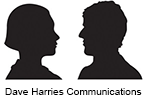Different styles of video
 Face to camera
Face to camera
The simplest of the interview videos, here we only see the interviewee and the answers they give. The person is still clearly being interviewed, as they look slightly off camera towards the out-of-shot interviewer, but we don’t hear or see the questions, only the all-important response. This style can help to keep the video shorter (as the question is cut out) but can sometimes lose a sense of objectivity that a professional interviewer can lend to the video when in shot and audible.
 Interviewer in shot
Interviewer in shot
The full broadcast interview style showing both the interviewer and interviewee. Usually filmed with at least two cameras to create a wide shot of both participants and a close up of the interviewee. A good interview question well delivered helps to create a real sense of objectivity and professionalism around the video, giving it a real broadcast news feel. This won’t be right for every situation but can work very well when an un-biased opinion or crisis media management is required.
 News piece / reporter led
News piece / reporter led
This style of video owes it’s origins to Broadcast TV news and follows a tried and trusted format using a professional journalist to introduce and lead the video. This allows a more complex story to be told with added voiceover or journalist questions punctuating and guiding the narrative. These videos can be longer than interview only pieces, if required, as interest is held by the professional news style and the addition of “B” Roll or illustrative footage layered on top of the narrative.
 How to / instructional videos
How to / instructional videos
Arguably the most obvious use for a web video, telling viewers how to do something. In the US these are often known as “explainer” videos. Youtube is full of these, often home made by enthusiasts, so you can learn more or less anything from Youtube. In the commercial business world, a home made video can send the wrong message (amateur presentation with poor sound and picture quality will detract from your brand) so it’s worth creating these professionally using lights and good sound to create a TV style set of instructions around your product or service. We’ve been doing these for a long time in both interview and TV presenter style formats and with good planning we can create a great deal of excellent content very quickly and cost effectively.
 Product demo
Product demo
Another obvious use of web video is to demonstrate your product or service. There are many ways in which this can be done, from expensive TV commercials to simple amateur videos shot on a smartphone. Once again a professionally made product demo will reflect well on your brand and get across the essential elements to educate your audience. These two examples are quite different in style but both very cost effective.
Case history / case study
Case histories or case studies have been a useful tool in the armoury of marketing and sales professionals for many years, but have often come in the form of lengthy written documents that may not get read in full, if at all, by the intended audience. A video version of a case study can be a watchable and easy to digest alternative. It usually involves interviews with the key players from the customer and producer standpoint and will take the form of a mini documentary. Although more time-consuming to produce than simple interviews, it’s easy to excerpt soundbites from the film to create social media testimonials and other content marketing nuggets, thus creating considerable extra value from the filmed material.
 Internal Communications
Internal Communications
We believe video is an excellent tool for internal comms and many organisations are finding it increasingly indispensable. Like all video, there are many possible ways to use moving images for internal communications. But the key is getting great value from your production efforts. If internal comms is anything it should be regular and frequent, so one expensive video every 12 months will have little effect. The answer is to produce regular content and push it out as often as possible. Good examples of this would be interviews with key members of the leadership team, instructional videos explaining proceadures or perhaps a regular chat show style Q and A with the top managers. These are all relatively simple and inexpensive to produce but can be a brilliant way of building trust and buy in from your workforce.
 Overview or About Us Videos
Overview or About Us Videos
The overview, intro or About Us video is a great way of introducing your company, brand, product or service. It’s not usually a direct sales tool but it can be a great opportunity to express the organisations philosophy or, put another way, what gets you out of bed in the morning. These videos work very well using interview footage from key members of the team to drive the narrative either as a collection of pithy soundbites or as reporter led, broadcast news style pieces. Alternatively they can also work as a collection of nice images with music and a caption here or there.
